
When to Repot a Succulent: Reasons for Upgrading Its Container
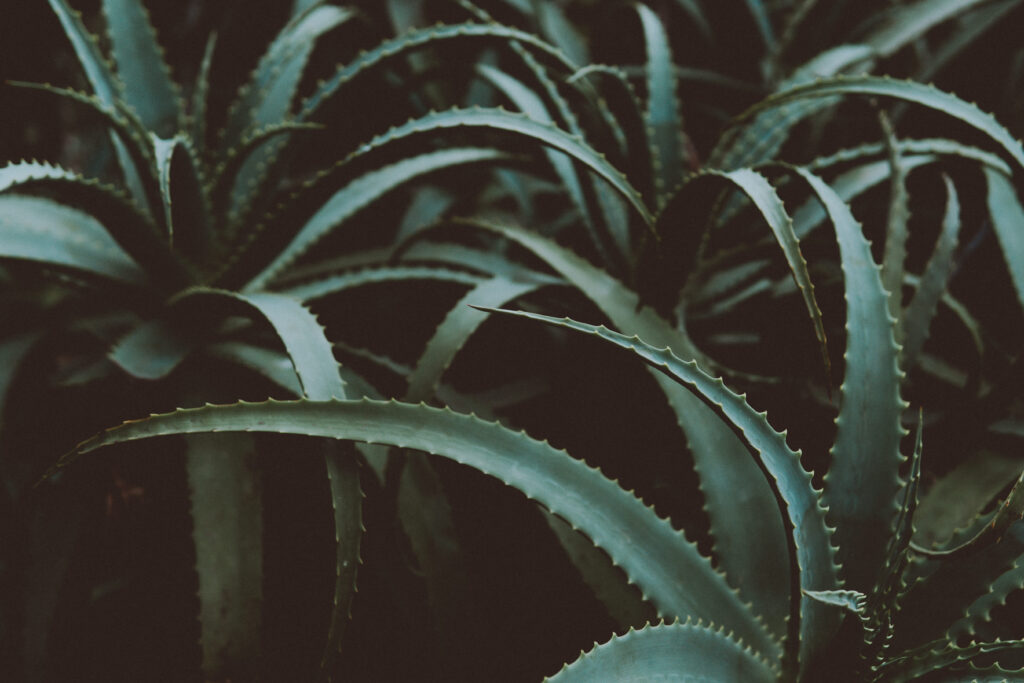
Succulents have gained immense popularity in recent years due to their unique and striking appearance, as well as their ability to thrive in various environments. These resilient plants are known for their ability to store water in their leaves, stems, and roots, making them a perfect choice for both indoor and outdoor gardens. However, to ensure the health and longevity of your succulent, it is important to know when and why to repot them.
We will explore the reasons why you may need to repot your succulent and discuss the signs that indicate it's time for an upgrade. We will also provide step-by-step instructions on how to properly repot your succulent, including choosing the right container, selecting the appropriate soil, and ensuring proper watering and drainage. Whether you are a seasoned succulent enthusiast or just starting out, this article will equip you with the knowledge and tools to keep your succulents thriving.
- When the succulent outgrows its current container
- When the roots start to become overcrowded
- When the plant is top-heavy and prone to tipping over
- When the soil becomes compacted and doesn't drain properly
- When you want to refresh the soil and provide fresh nutrients
- When the current container is damaged or deteriorating
- When you want to change the aesthetic of the display
- When the succulent is showing signs of stress or decline
- When you want to propagate the succulent and create new plants
- When you want to control the growth and size of the succulent
- Succulents should be repotted when they outgrow their current container
- Repotting is necessary when the roots of the succulent become overcrowded
- If your succulent is top-heavy and prone to tipping over, it is time to repot
- Repotting is needed when the soil becomes compacted and doesn't drain properly
- Refreshing the soil and providing fresh nutrients is a good reason to repot a succulent
- If the current container is damaged or deteriorating, it is advisable to repot the succulent
- Changing the aesthetic of the display is a valid reason to repot a succulent
- Repotting may be necessary if the succulent is showing signs of stress or decline
- If you want to propagate the succulent and create new plants, it's time to repot
- Repotting can help control the growth and size of the succulent
- Frequently Asked Questions
When the succulent outgrows its current container
When the succulent outgrows its current container, it's time to consider repotting. As succulents grow, their roots need more space to spread out and access water and nutrients. If you notice that the roots are tightly packed and starting to poke out of the drainage holes, it's a sign that the succulent needs a larger container.
Repotting the succulent into a bigger container allows the roots to grow freely and prevents them from becoming root-bound. When the roots have enough room to grow, the succulent can establish a stronger root system, which in turn promotes healthier growth and overall plant vitality.
Additionally, when a succulent is in a container that is too small, it can become top-heavy and prone to tipping over. Repotting it into a larger, more stable container ensures that it remains upright and stable, reducing the risk of damage or breakage.
When selecting a new container for your succulent, make sure it has adequate drainage holes to prevent waterlogging. Succulents are adapted to arid conditions and are susceptible to root rot if their roots are constantly sitting in water.
 Create Gorgeous Succulent Wreaths: Step-by-Step Guide
Create Gorgeous Succulent Wreaths: Step-by-Step GuideRemember to choose a container that is proportionate to the size of your succulent. While it's important to provide enough space for the roots to grow, a container that is too large can hold excess moisture and lead to overwatering, which is detrimental to succulent health.
Signs that your succulent needs repotting:
- Roots poking out of the drainage holes: If you see roots emerging from the drainage holes, it's a clear indication that the succulent has outgrown its current container.
- Tightly packed roots: Gently remove the succulent from its pot and inspect the roots. If they are tightly packed and circling the bottom of the container, it's time to repot.
- Stunted growth: If your succulent is not showing signs of healthy growth despite proper care, it may be root-bound and in need of a larger container.
- Top-heavy and unstable: If your succulent is constantly tipping over or leaning to one side, it's a sign that the container is too small and a larger one is necessary.
Remember, repotting a succulent is not something that needs to be done frequently. Most succulents only need to be repotted every 1-2 years, depending on their growth rate. However, it's essential to keep an eye on your succulent's root growth and overall health to ensure it has the space it needs to thrive.
When the roots start to become overcrowded
When the roots start to become overcrowded, it is a clear indication that it is time to repot your succulent. Over time, succulents grow and their root systems expand, seeking more space to thrive. As the roots become tightly packed in the current container, they may start to outgrow the available space.
When the roots are overcrowded, it can lead to several problems for your succulent. Firstly, it restricts the plant's ability to absorb water and nutrients from the soil. This can result in stunted growth, yellowing leaves, or even root rot. Additionally, overcrowded roots can cause the plant to become top-heavy and unstable, increasing the risk of tipping over.
Repotting your succulent when the roots are overcrowded allows them to spread out and establish themselves in a larger container. This gives them access to more nutrients and water, promoting healthier growth and overall plant vigor.
When repotting, choose a container that is slightly larger than the current one, providing enough room for the roots to expand. Avoid selecting a container that is too large, as excessive soil volume can lead to waterlogging and root rot. It is recommended to use a well-draining potting mix specifically formulated for succulents to ensure proper moisture balance.
 Where Can I Find a Wide Selection of Succulents in Los Angeles?
Where Can I Find a Wide Selection of Succulents in Los Angeles?Signs of overcrowded roots:
- Roots growing out of the drainage holes
- Visible congestion of roots at the surface of the soil
- Difficulty in watering the plant properly
- Slow or stunted growth
- Yellowing or wilting leaves
Keep an eye out for these signs to determine if your succulent needs to be repotted due to overcrowded roots. Regularly inspecting the root system can help you identify the right time to upgrade its container.
Remember, repotting your succulent should be done with care to avoid damaging the delicate roots. Handle the plant gently and provide it with the necessary support during the repotting process. By repotting at the right time, you can ensure your succulent continues to thrive and remain healthy.
When the plant is top-heavy and prone to tipping over
One of the main reasons to consider repotting your succulent is when the plant becomes top-heavy and prone to tipping over. As succulents grow, they develop a larger root system and their foliage becomes denser, making them more likely to become unbalanced in their current container.
If you notice that your succulent is leaning to one side or constantly falling over, it's a clear indication that it has outgrown its container. Repotting it into a larger and more stable container will provide better support and prevent any damage to the plant.
When repotting a top-heavy succulent, it's essential to choose a container that is wider and deeper than its current one. This will give the plant more room to spread its roots and establish a stronger foundation.
Remember to use a well-draining potting mix specifically formulated for succulents to ensure proper moisture management and prevent root rot. Additionally, it's important to handle the plant with care during the repotting process to avoid any damage to its delicate foliage or roots.
When the soil becomes compacted and doesn't drain properly
 Discover Stunning Succulents: Unique Mother's Day Gift Ideas
Discover Stunning Succulents: Unique Mother's Day Gift IdeasSucculents are known for their ability to thrive in well-draining soil. However, over time, the soil in their container can become compacted, leading to poor drainage. This can spell trouble for your succulent's health and overall growth.
One of the signs that it's time to repot your succulent is when you notice that the soil doesn't drain properly. If you water your succulent and the water seems to sit on top or takes an excessively long time to drain through the soil, it's an indication that the soil has become compacted.
Compacted soil can be detrimental to your succulent's roots as it prevents adequate airflow and can lead to root rot. When the roots are constantly sitting in moisture, they become more susceptible to fungal infections and other diseases.
By repotting your succulent in fresh, well-draining soil, you allow the roots to breathe and prevent the accumulation of excess moisture. This ensures the overall health and longevity of your succulent.
When repotting, make sure to choose a container with sufficient drainage holes. This will help prevent waterlogged soil and promote proper drainage.
When you want to refresh the soil and provide fresh nutrients
Repotting your succulent is necessary when you notice that the soil is depleted and lacks nutrients. Over time, the soil can become compacted and lose its ability to retain water effectively. This can lead to poor drainage and ultimately, root rot.
 Succulents in Buddha's Temple: Symbolizing Resilience & Enlightenment
Succulents in Buddha's Temple: Symbolizing Resilience & EnlightenmentBy repotting your succulent, you can refresh the soil and provide it with fresh nutrients. This will ensure that your plant has the necessary resources to thrive and stay healthy. When choosing a new potting mix, opt for a well-draining one specifically formulated for succulents. These mixes usually contain a combination of ingredients such as perlite, pumice, and sand to promote proper drainage.
When repotting, gently remove the succulent from its current container and carefully separate the roots from the old soil. Inspect the roots for any signs of rot or damage, and trim them if necessary. Place the succulent in its new pot, ensuring that it is positioned at the same depth as before. Fill the remaining space with the fresh potting mix, gently pressing it down to secure the plant in place. Water the succulent lightly after repotting and avoid watering again for a few days to allow the roots to adjust.
Remember, repotting your succulent not only refreshes the soil, but it also gives you the opportunity to inspect the roots and address any potential issues. This proactive approach can help prevent problems and ensure the long-term health of your succulent.
When the current container is damaged or deteriorating
One of the main reasons to repot a succulent is when its current container is damaged or deteriorating. Over time, containers can become cracked, chipped, or even develop holes at the bottom. These issues can lead to poor drainage, which can be detrimental to the health of your succulent.
When a container is damaged, it may no longer provide the necessary support for the succulent's root system. This can result in root rot or other root-related problems. Repotting your succulent into a new, sturdy container can help prevent these issues and provide a fresh start for your plant.
If you notice any signs of damage or deterioration in the current container, such as visible cracks or water leaking through the bottom, it's time to consider repotting your succulent.
When you want to change the aesthetic of the display
When you want to change the aesthetic of the display, repotting your succulent is a great option. By upgrading its container, you can completely transform the look and feel of your succulent arrangement. Whether you want to match it with your home decor or experiment with different styles, repotting allows you to express your creativity and personalize your display.
 Where to Find a Variety of Succulent Plants at Home Depot
Where to Find a Variety of Succulent Plants at Home DepotWhen repotting for aesthetic reasons, consider choosing a container that complements the color and shape of your succulent. You can opt for a sleek and modern pot for a minimalist look or go for a decorative and unique container to make a statement piece. Don't be afraid to mix and match different textures, patterns, and materials to create a visually appealing display.
Additionally, repotting your succulent into a larger container can also give it more room to grow. As your succulent matures, it may outgrow its current pot, causing its roots to become cramped. By repotting into a larger container, you provide your succulent with the necessary space for its roots to expand and thrive. This can result in healthier growth and prevent the roots from becoming root-bound.
Remember to carefully choose the size of the new container, ensuring that it is proportionate to the size of your succulent. A container that is too large can lead to overwatering and potential root rot, while a container that is too small may restrict the growth of your succulent.
Repotting your succulent for aesthetic purposes not only allows you to change the look of your display but also provides your succulent with the space it needs to grow. By carefully selecting the right container and considering the size and style that complements your succulent, you can upgrade its container and enhance its overall appearance.
When the succulent is showing signs of stress or decline
If you notice your succulent displaying signs of stress or decline, it may be time to consider repotting it. Some common indications that your succulent may need a new container include:
- Root bound: If the roots of your succulent start growing out of the drainage holes or circling around the pot, it's a clear sign that the current container is too small for the plant. Repotting will provide the roots with more space to grow and access the necessary nutrients.
- Poor drainage: Succulents thrive in well-draining soil, and if you notice that excess water is not draining properly or if the soil remains consistently wet, it could lead to root rot. Repotting your succulent into a container with better drainage will help prevent this issue.
- Yellowing or wilting leaves: If your succulent's leaves are turning yellow, mushy, or wilting, it could be a sign of overwatering, insufficient sunlight, or nutrient deficiency. Repotting the succulent allows you to assess the root health and make necessary adjustments to its care.
- Soil depletion: Over time, the nutrients in the soil can deplete, causing the succulent to struggle. If you notice slow growth or lack of vigor, repotting with fresh, nutrient-rich soil can help rejuvenate the plant.
Remember that repotting should be done with care to avoid damaging the succulent's delicate roots. It is generally recommended to repot succulents during their active growth period, which is usually in spring or early summer.
By addressing these signs of stress or decline through repotting, you can give your succulent a fresh start in a more suitable container, promoting its overall health and growth.
 Ultimate Guide: Top Places to Buy Succulents for Mother's Day
Ultimate Guide: Top Places to Buy Succulents for Mother's DayWhen you want to propagate the succulent and create new plants
If you want to propagate your succulent and create new plants, it may be time to repot it into a larger container. Propagation is the process of growing new succulents from existing ones, and it often involves taking cuttings or separating offsets from the main plant.
When a succulent is ready to be propagated, it typically means that it has outgrown its current container and needs more space for its roots to grow. Repotting into a larger container allows the plant to establish new roots, which is crucial for successful propagation.
By repotting your succulent into a larger container, you provide it with the necessary room for the development of new plants. The new container should have enough space to accommodate the parent plant and the cuttings or offsets you plan to propagate.
Furthermore, repotting provides an opportunity to separate the offsets or cuttings from the main plant, making it easier to establish new plants. These newly propagated plants can be potted individually or shared with friends and family.
If you're looking to propagate your succulent and create new plants, repotting it into a larger container is essential. This will give the parent plant and its cuttings or offsets the space they need to grow and thrive.
When you want to control the growth and size of the succulent
When you want to control the growth and size of the succulent, it may be time to repot it into a larger container. As succulents are known for their ability to thrive in smaller spaces, they can become root-bound if left in the same pot for too long.
 Discover a Variety of Homemade Succulent Food Recipes for Every Palate
Discover a Variety of Homemade Succulent Food Recipes for Every PalateRoot-bound succulents are those whose roots have grown tightly and densely within the pot, often circling around the bottom or sides. This can inhibit the plant's growth and lead to a decrease in overall health and vitality.
By repotting your succulent into a larger container, you provide it with the opportunity to spread its roots and establish a stronger foundation. This allows the plant to access more nutrients and water, promoting healthier growth and preventing stunted development.
Signs that your succulent is root-bound:
- The plant appears top-heavy and unstable in its current pot
- Roots are visible on the surface or protruding from drainage holes
- Water drains quickly through the pot without being absorbed
- The plant has stopped growing or has become stagnant
- The soil dries out rapidly after watering
If you notice any of these signs, it's a clear indication that your succulent needs a larger home. Repotting will provide it with the space it needs to flourish and continue its growth.
Succulents should be repotted when they outgrow their current container
When it comes to succulents, one of the key factors in their successful growth and development is providing them with the right environment. This includes not only the right amount of sunlight and water, but also the appropriate container size.
As succulents grow, they will eventually outgrow their current container. This is when it becomes necessary to repot them into a larger pot or container. Repotting your succulents at the right time is crucial for their overall health and well-being.
Reasons for repotting your succulent
 Discover the Best Succulent Nursery in San Diego for Your Green Oasis
Discover the Best Succulent Nursery in San Diego for Your Green Oasis- Root Bound: One of the main reasons for repotting a succulent is when it becomes root bound. Root bound is a term used to describe a situation where the roots of a plant have completely filled up the current container, leaving no room for further growth. When a succulent becomes root bound, it can hinder its development and lead to stunted growth. By repotting into a larger container, you provide the plant with more space for its roots to spread out and absorb nutrients efficiently.
- Poor Drainage: Another reason to consider repotting your succulent is if the current container does not have proper drainage. Succulents require well-draining soil to prevent root rot and other moisture-related issues. If the current container does not have drainage holes or the soil is not draining properly, repotting into a container with adequate drainage can help prevent waterlogged roots and promote healthier growth.
- Refresh Soil: Over time, the soil in the container can become compacted and depleted of nutrients. Repotting your succulent provides an opportunity to refresh the soil and ensure it has the necessary nutrients for optimal growth. You can mix in fresh potting mix specifically formulated for succulents to provide them with the right balance of nutrients and drainage.
- Improved Aesthetic: Repotting your succulent can also be done for aesthetic purposes. As succulents grow, they may become top-heavy or start to lean. Repotting them into a larger container can help provide stability and improve their overall appearance.
It's important to note that not all succulents will require immediate repotting. Some varieties have slower growth rates and may not need to be repotted as frequently as others. However, keeping an eye on the signs mentioned above will help you determine when it's time to upgrade your succulent's container.
Repotting is necessary when the roots of the succulent become overcrowded
One of the main reasons to repot a succulent is when its roots become overcrowded in its current container. Over time, the succulent's roots grow and spread, filling up the available space in the pot. This can lead to a variety of problems, including stunted growth, root rot, and nutrient deficiencies.
When the roots become overcrowded, they can start to wrap around each other and even escape through the drainage holes at the bottom of the pot. This can cause the roots to become tangled, restricting their ability to absorb water and nutrients effectively. As a result, the succulent may start showing signs of stress, such as wilting, yellowing leaves, or slower growth.
Repotting provides the succulent with a fresh start by providing it with more room for its roots to grow and expand. This allows the plant to establish a stronger root system, which in turn promotes healthier growth and overall plant vitality.
Signs that your succulent needs to be repotted
Knowing when to repot your succulent is essential to ensure its continued health and well-being. Here are some signs that indicate it may be time to upgrade its container:
- Roots are visible through the drainage holes: If you can see the succulent's roots poking out through the drainage holes, it's a clear indication that the current pot is too small for the plant.
- Slow growth or stunted appearance: If your succulent has stopped growing or appears stunted, it may be struggling to access sufficient nutrients due to overcrowded roots.
- Water drains too quickly: If water runs straight through the pot without being absorbed, it could be a sign that the roots have taken up most of the available space, leaving little room for water retention.
- Roots are tightly coiled or circling around the pot: If you remove the succulent from its container and notice tightly coiled or circling roots, it's a clear indication that the plant has outgrown its current pot.
If you notice any of these signs, it's time to consider repotting your succulent to provide it with a more suitable environment for healthy growth.
If your succulent is top-heavy and prone to tipping over, it is time to repot
When it comes to caring for your succulent, one important aspect to consider is the condition of its container. Over time, succulents can outgrow their pots, leading to various issues such as instability and limited root growth. If you notice that your succulent is top-heavy and prone to tipping over, it is a clear indication that it is time to repot.
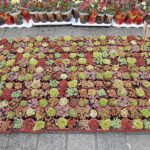 Discover Local Succulent Sales: Find the Best Deals Near You!
Discover Local Succulent Sales: Find the Best Deals Near You!Repotting your succulent in a larger, more stable container not only provides better support but also allows for proper root development. When a succulent becomes top-heavy, it can easily tip over, causing potential damage to the plant and its surrounding environment.
Additionally, an overcrowded container can restrict the growth of your succulent's roots. Roots need space to spread out and absorb nutrients efficiently. When the roots become restricted, the succulent may struggle to access the necessary resources, leading to stunted growth and overall poor health.
By repotting your succulent, you give it the opportunity to thrive and reach its full potential. A larger container with well-draining soil promotes healthy root growth, which in turn supports the overall growth and vitality of the plant.
When selecting a new container for your succulent, opt for one that is slightly larger than the current pot. This will provide ample room for the roots to expand without overwhelming the plant. Ensure that the new container has drainage holes to prevent waterlogged soil, which can lead to root rot.
Remember to handle your succulent with care during the repotting process. Gently remove the plant from its current pot, being mindful of its delicate roots. Once the succulent is in its new container, backfill with fresh, well-draining soil, ensuring that the roots are adequately covered.
Overall, repotting your succulent when it becomes top-heavy is crucial for its well-being. By providing a more stable and spacious environment, you are setting your succulent up for success and ensuring its continued growth and beauty.
Repotting is needed when the soil becomes compacted and doesn't drain properly
When it comes to succulents, repotting is a crucial task to ensure their health and longevity. One of the main reasons for repotting a succulent is when the soil becomes compacted and no longer drains properly. This can happen over time as the plant grows and the roots start to fill up the container.
 Find Your Perfect Day of the Dead Succulents: Festive Plants!
Find Your Perfect Day of the Dead Succulents: Festive Plants!Compacted soil not only hampers drainage but also restricts the root growth of the succulent. When the roots are confined and unable to spread out, it can lead to stunted growth and even root rot. Therefore, it is important to keep an eye on the soil condition and repot the succulent when necessary.
Signs that indicate the need for repotting:
- Roots growing out of drainage holes: If you notice the roots of your succulent poking out of the drainage holes at the bottom of the pot, it is a clear indication that the plant has outgrown its current container. When this happens, repotting will provide the roots with more room to grow and prevent them from becoming congested.
- Slow water absorption: If you find that the water you pour into the pot takes an unusually long time to be absorbed, it could be due to compacted soil. The excess moisture retained in the soil can lead to root rot and other fungal diseases. Repotting with fresh, well-draining soil will ensure proper water absorption and prevent such issues.
- Wilting or yellowing leaves: When a succulent's leaves start to wilt or turn yellow, it may be a sign of root suffocation caused by compacted soil. The lack of oxygen reaching the roots can result in nutrient deficiencies and weaken the overall health of the plant. Repotting will help alleviate this problem and promote healthier growth.
Remember, it's important to choose the right potting mix and container size when repotting your succulent. Use a well-draining soil mix specifically formulated for succulents and ensure that the new container has adequate drainage holes to prevent waterlogging. By repotting at the right time, you can provide your succulent with the optimal growing conditions it needs to thrive.
Refreshing the soil and providing fresh nutrients is a good reason to repot a succulent
Repotting a succulent is an essential part of its care routine, ensuring its long-term health and well-being. One of the main reasons to repot a succulent is to refresh the soil and provide fresh nutrients.
Over time, the soil in a succulent's container can become compacted, preventing proper drainage and airflow. This can lead to root rot and other issues that can affect the overall health of the plant. By repotting the succulent, you can remove the old soil and replace it with fresh, well-draining soil.
Additionally, repotting allows you to provide fresh nutrients to the succulent. As succulents grow, they deplete the nutrients in the soil, making it important to replenish them. By repotting, you can incorporate nutrient-rich soil or add slow-release fertilizers to ensure that your succulent has access to the necessary nutrients for healthy growth.
When repotting a succulent for the purpose of refreshing the soil and providing fresh nutrients, it's important to choose the right pot size. Select a pot that is slightly larger than the current one, allowing the succulent's roots room to grow. Avoid using a pot that is too large, as this can lead to overwatering and other issues.
Remember to handle the succulent with care during the repotting process. Gently remove the plant from its current container, being mindful of the delicate roots. Inspect the roots for any signs of rot or damage, and trim off any unhealthy parts before placing the succulent in its new pot with fresh soil.
Overall, repotting a succulent to refresh the soil and provide fresh nutrients is an important step in maintaining the plant's health and promoting optimal growth. By taking the time to repot your succulent when needed, you can ensure that it thrives and continues to bring beauty to your indoor or outdoor space.
If the current container is damaged or deteriorating, it is advisable to repot the succulent
When it comes to succulents, choosing the right container is crucial for their well-being. However, over time, containers can become damaged or deteriorate, which may require you to repot your succulent.
Repotting is recommended if the current container is showing signs of wear and tear. Cracks, chips, or a deteriorating structure can negatively impact the growth of your succulent. These damages can lead to inadequate drainage, which can cause root rot or other moisture-related issues. Therefore, it is important to carefully inspect your succulent's container regularly and repot it if any damage is detected.
Moreover, a damaged container can also be a potential hazard for your succulent. Sharp edges or broken pieces can harm the plant or even pose a risk to you during handling. To ensure the safety of both you and your succulent, it is essential to transfer it to a new, undamaged container.
Additionally, repotting your succulent can provide an opportunity to upgrade its container for improved aesthetics. Over time, your taste and style preferences may change, and a new container can enhance the overall appearance of your succulent. Whether you opt for a sleek ceramic pot or a trendy geometric planter, choosing a container that complements your succulent's beauty can bring a fresh look to your space.
Remember that when repotting, it is important to choose a container that is slightly larger than the current one. This will allow your succulent's roots to have enough space to grow and expand properly. However, avoid selecting a container that is too large, as it can lead to excessive soil moisture retention and potentially harm the succulent.
If your succulent's current container is damaged, deteriorating, or no longer aligns with your style preferences, it is a good idea to consider repotting. By providing a new and suitable container, you can ensure the continued health and aesthetic appeal of your beloved succulent.
Changing the aesthetic of the display is a valid reason to repot a succulent
When it comes to succulents, their beauty lies not only in their ability to survive in harsh conditions but also in their stunning array of shapes, colors, and textures. As succulent enthusiasts, we often find ourselves drawn to their unique aesthetic, and sometimes, we may feel the need to change up their display to enhance their visual appeal.
Repotting a succulent can be a fantastic way to refresh its look and give it a new lease on life. By upgrading its container, you can create a visually pleasing arrangement that complements your home decor or garden theme. Whether you opt for a vibrant ceramic pot, a sleek terrarium, or a rustic wooden planter, the possibilities are endless.
Moreover, changing the aesthetic of the display can also help highlight the distinct features of your succulent. For instance, if you have a tall and slender Echeveria, transferring it to a taller pot can accentuate its graceful form and make it a focal point in your arrangement. On the other hand, a clustering Sedum might benefit from a wider container that allows its sprawling growth to shine.
Remember, repotting for aesthetic reasons should be done with care to ensure the well-being of your succulent. Make sure the new container provides adequate drainage to prevent waterlogged roots, and choose a potting mix suitable for succulents to ensure proper nutrient availability.
So, if you find yourself yearning for a change in your succulent's display, don't hesitate to give it a new home. By repotting for aesthetic reasons, you can transform your succulent into a stunning piece of living art that brings joy and beauty to any space.
Repotting may be necessary if the succulent is showing signs of stress or decline
Repotting a succulent is an essential part of its care routine. It becomes necessary when the succulent shows signs of stress or decline, indicating that it has outgrown its current container or that the soil has become depleted. Understanding the reasons for repotting can help you provide the best conditions for your succulent's growth and overall well-being.
1. Root Bound
One of the primary reasons for repotting a succulent is when it becomes root bound. Root bound occurs when the roots outgrow the current container and become tightly packed. Signs of a root-bound succulent include roots growing out of the drainage holes, roots circling the container, or the plant becoming top-heavy. Repotting in a larger container allows the roots to spread and access fresh soil, promoting healthier growth.
2. Depleted Soil
Over time, the soil in a succulent's container can become depleted of nutrients, affecting the plant's health. Signs of depleted soil include slow growth, yellowing leaves, or decreased overall vitality. Repotting the succulent provides an opportunity to replenish the soil with fresh, well-draining succulent or cactus mix, ensuring the plant has access to the necessary nutrients for its growth.
3. Pest Infestation
If you notice signs of pests, such as mealybugs or spider mites, on your succulent, repotting can help eliminate the infestation. Pests can hide in the soil or between the leaves, making it difficult to completely eradicate them. By repotting the succulent in fresh soil and carefully inspecting the roots and leaves, you can remove any remaining pests and prevent them from reinfesting the plant.
4. Disease Prevention
Repotting can also be a proactive measure to prevent the spread of diseases. If you suspect your succulent has a fungal or bacterial infection, repotting can help remove any infected soil or roots, reducing the risk of further contamination. It is important to use sterile tools and fresh soil to avoid transferring any pathogens to the new container.
5. Upgrading Aesthetics
Sometimes, repotting a succulent is purely for aesthetic reasons. As the succulent grows, it may outgrow its current container or become unbalanced. Repotting allows you to choose a more suitable and visually appealing container that complements the plant's growth and enhances its overall beauty.
Remember, repotting a succulent should be done with care to minimize stress on the plant. Always use well-draining soil, provide adequate sunlight and water, and ensure the succulent has adapted to its new environment before exposing it to harsh conditions. By observing the signs and reasons for repotting, you can promote the health and longevity of your succulent.
If you want to propagate the succulent and create new plants, it's time to repot
One of the main reasons to repot a succulent is if you want to propagate it and create new plants. Repotting provides an opportunity to separate the offsets or baby plants that have grown alongside the parent succulent. These offsets can then be individually potted, allowing them to develop into independent plants.
When repotting for propagation, it's important to carefully separate the offsets from the main plant, ensuring that each one has its own set of roots. Gently twist or cut the offsets away from the parent plant, taking care not to damage their delicate root systems. Once separated, you can plant the offsets in their own containers, providing them with fresh soil and space to grow.
By repotting for propagation, you can expand your succulent collection and share the joy of these beautiful plants with others.
Repotting can help control the growth and size of the succulent
When it comes to succulents, repotting can play a crucial role in controlling their growth and size. As these plants have a tendency to outgrow their containers over time, repotting becomes necessary to ensure their overall health and well-being.
One of the main reasons to repot a succulent is to provide it with a larger container that can accommodate its growing root system. When a succulent's roots become cramped and overcrowded, it can hinder their ability to absorb water and nutrients effectively. By repotting, you can give the roots more space to spread out and establish a stronger foundation.
Additionally, repotting can help prevent the succulent from becoming root-bound. When a succulent outgrows its container, its roots can become tightly wound around the edges and bottom. This can lead to poor drainage and potentially cause root rot. By repotting, you can untangle the roots and promote healthier growth.
Another reason to consider repotting is to refresh the potting mix. Over time, the potting soil can become compacted and depleted of nutrients. Repotting allows you to replace the old soil with a fresh mix that provides better drainage and nourishment for the succulent.
It's important to note that not all succulents require frequent repotting. Some species have slower growth rates and can thrive in the same container for several years. However, if you notice signs of root overcrowding, such as roots poking out of drainage holes or becoming tightly bound, it's a good indication that repotting is needed.
When repotting a succulent, it's crucial to handle the plant with care. Use a well-draining potting mix specifically formulated for succulents and ensure the new container has drainage holes to prevent waterlogged roots. Allow the succulent to adjust to its new environment by avoiding direct sunlight and watering sparingly for the first few weeks.
Overall, repotting a succulent can be a beneficial practice to maintain the plant's health and promote optimal growth. By providing a larger container, untangling the roots, and refreshing the potting mix, you can ensure that your succulent thrives and continues to beautify your space.
Frequently Asked Questions
1. How do I know when to repot my succulent?
You should consider repotting your succulent when its current container is too small and the roots are becoming overcrowded.
2. What are the signs that my succulent needs to be repotted?
Signs that your succulent needs repotting include roots sticking out of the drainage holes, slowed growth, or the plant becoming top-heavy.
3. What type of container should I use when repotting my succulent?
Choose a well-draining container made of terracotta or ceramic, with drainage holes to prevent overwatering.
4. How often should I repot my succulent?
Generally, succulents should be repotted every 1-2 years, or when the current container becomes too small for the plant's growth.
If you want to read more articles similar to When to Repot a Succulent: Reasons for Upgrading Its Container, you can visit the Planters and Arrangements category.

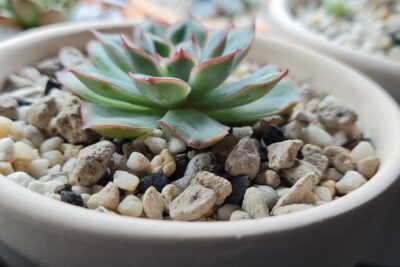
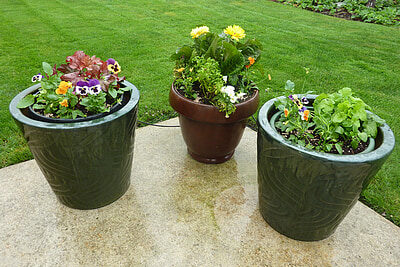


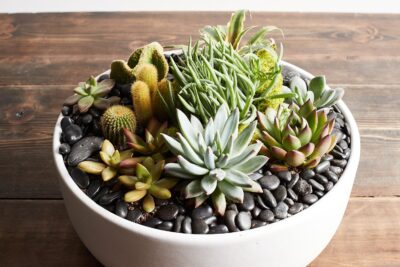
You Must Read